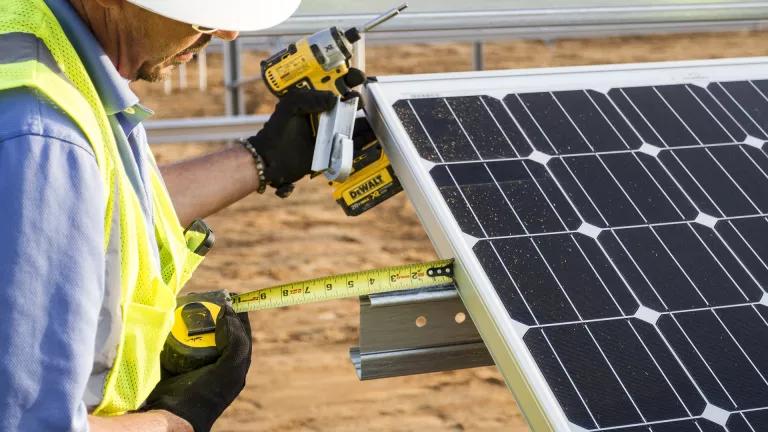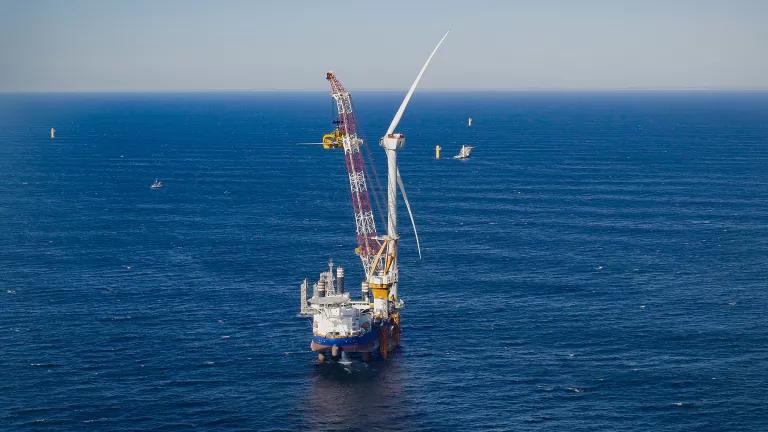Renewable Power Helped the United States Survive the Hottest Summer Ever
This summer, the United States endured the two warmest months ever recorded, yet the system held because of renewable energy.

As we head into October, we leave behind a summer of extreme heat across the United States, and with it, you could almost hear the electric power sector breathe a collective sigh of relief.
This summer, the United States endured the two warmest months ever recorded, yet the system held. As the summer kicked off, grid monitors rang alarm bells about looming blackouts, but apart from outages related to wildfires in Hawaii and a hurricane in the Southeast, there were no major interruptions. Despite years of messages trying to raise doubts about whether renewables have a place in grid reliability, there’s no doubt now that wind and solar power and battery storage held their own this summer.
While it is encouraging that the power stayed on, experts agree that the grid was pushed to its limit, and continually increasing heat and extreme weather during summer mean we need to keep strengthening and expanding the grid. Utilities, grid managers, and policymakers who support the transition to cleaner, more reliable, less costly renewable power must redouble their efforts as bouts of extreme weather linked to climate change become more common. While fossil fuel supporters will continue to blame renewables for all the system’s woes, the positive impacts of renewable power were on full display across the country.
Record heat, record demand
There was no escaping the extreme heat this summer. It was particularly brutal in Texas, where the capital, Austin, hit triple-digit temperatures for 34 straight days. Dallas recorded record-high heat for three consecutive days while El Paso saw 56 triple-digit days, the third most in its history. From June 27 to August 12, Texas set 10 all-time peak power demand records, according to data from ERCOT (Electric Reliability Council of Texas), which manages 90 percent of the state's electric load.
The Lone Star State was no outlier. Scorching temperatures covered much of the Southeast in August before creeping into the Midwest and Northeast. The average temperature across the contiguous United States in August was 74.4 degrees Fahrenheit—2.3 degrees above average—which clocks in as the ninth warmest in the country’s 129 years of recordkeeping. Globally, the summer of 2023 was the hottest on record, according to European Union’s Climate Change Service.
These high temperatures led to record loads across the country. In late August, Southwest Power Pool (SPP), the grid manager for utilities and transmission companies across 17 states in the central United States, saw record loads on three consecutive days.
Despite circumstances that many believed would cause it to buckle and give out, the grid held up. Part of that success can be attributed to emergency demand response. In Texas, for example, surging power demand prompted several calls from ERCOT to customers to reduce their energy use, including during the first week of September amid sizzling heat. Still, the state avoided widespread blackouts.
But emergency actions and last-minute energy-saving measures from customers should not be the basis for grid reliability. To that end, we need to continue increasing the capacity of grid resources to prepare for increasingly hot summers. And this summer showed the new capacity we’ve already built is delivering on reliability.
Renewables on the rise
Clean energy resources continue to ramp up (pun intended) to provide the reliable, affordable, clean service we all deserve. At the beginning of August, the United States had about 237,000 megawatts of utility-scale solar, wind, and battery storage online. This accounted for 15.1 percent of electricity generated, up from 12 percent at the same time a year prior, according to the American Clean Power Association. Of that, 10,000 megawatts were added in the first half of 2023.
Texas produces more wind power than any other state, but this summer, it was solar that stole the show. The state produced twice as much solar power as last year, according to Dr. Joshua Rhodes, a research scientist with the Webber Energy Group at the University of Texas. On August 10, wind and solar energy generated enough power to meet 25 percent of demand during the peak hour of usage, according to ERCOT.
In fact, all U.S. power grids set solar generation records this summer, according to Grid Status, a website that tracks grids in real time. And that trend is set to continue. A new report from the Solar Energy Industries Association estimates that 32 gigawatts of additional solar capacity will be added in 2023, representing 52 percent growth from 2022.
Wind also played its part in keeping the air conditioners humming. In late August, at SPP, renewables (mostly wind) contributed 10 to 20 percent of power generation at peak times. Grid operators in California and in the central United States also set renewable energy records.
The recipe for success
Several factors came together to prevent a summer of extreme heat from turning into the kind of life-threatening disaster we’ve seen when air conditioners go silent during heat waves:
- More diversification of energy sources, including increasing amounts of wind and solar
- Better planning and preparedness
- Higher levels of hydroelectric power due to heavy winter rain and snow in the West
- Demand response programs that offer consumers rebates to ease up on energy use during the hottest parts of the day
Emergency demand response should not be the north star for grid reliability, and this summer highlights proactive demand management as a necessary strategy. Grid operators and utilities should strengthen programs that incentivize reduced and more efficient energy use and encourage the adoption of flexible demand resources like electric vehicles and smart homes.
While impressive, the sheer volume of new solar and wind power alone is only part of the picture. Renewable energy is providing more resilient, predictable supply, and storage is extending the value these resources offer past the hours when the sun is shining.
More solutions are needed, but many are at our disposal. We need a significant build-out of high-voltage interregional transmission to get that new power where it needs to go, particularly during extreme weather. Utility planners and policymakers need to make it a priority to build new transmission lines that interconnect utility regions and deliver power across greater distances. The grid needs to be bigger than any extreme weather pattern. In July, the Federal Energy Regulatory Commission took a great first step toward speeding up the connection of new renewable power to grids across the country, but it still needs to finalize a strong regional transmission planning rule and start a rule to ensure strong interregional transmission.
The lesson from the summer of 2023 may be that, while the sky isn’t falling, we cannot let our guard down. We need to accelerate efforts to integrate more renewable energy and storage resources into the grid, encourage energy efficiency and demand response, and upgrade and expand the transmission grid, and to do it all while protecting communities and ecosystems that have historically—and disproportionately—been negatively impacted by energy development.



